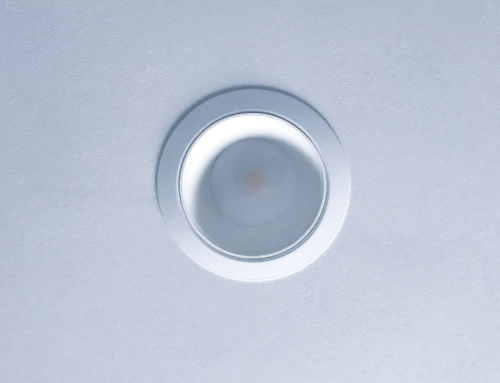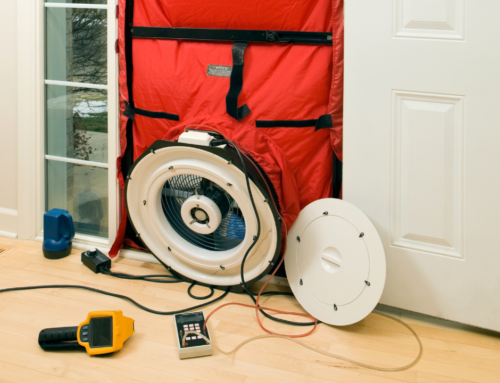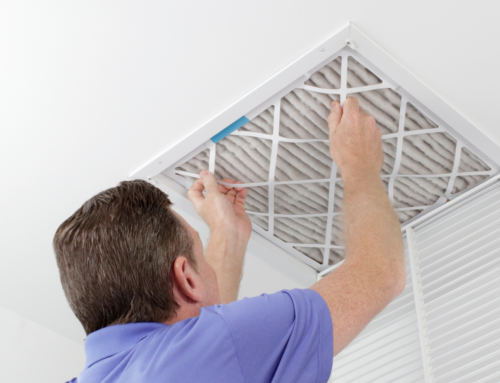One of the first questions we ask during an energy assessment is, “Do you have rooms that are hotter or colder compared to the rest of the house?” Most of the time the answer is, “yes.” The usual culprit for this situation is incorrectly installed insulation. For insulation to work as it should, it must be continuous and contiguous, spreading over everything with no breaks in coverage.
This image was taken in the attic, above the first floor, where the second story had a walk-in access. The cellulose insulation blown over the floor of this attic was done well. It is 12 inches thick, covers all the ceiling joists and goes right up to the roof line. However, the insulation applied in the cavities of the wall is a problem. The insulation needs to cover everything and have no breaks. The framing creates a break every 16 inches where the studs are located. On a 2×4 wall, code requires that it be insulated to an R13. The cavities meet code, but the framing is only an R4. 29% of the wall is insulated to just an R4.
During the summer, attics can reach temperatures above 130°. The 2x4s transfer heat to the drywall, which radiates to the inside of the house. This results in any rooms, with walls exposed to the attic, to be much warmer than other rooms. Then the opposite happens in the winter. The warm air from inside the house will heat the drywall up, transferring the heat to the studs, which then radiates into the cold attic. High heat always flows to low heat.
Even though this wall technically meets code, it shouldn’t, and we are actively working with state code officials to change it. The building code requires any exterior wall to be insulated to an R13. That was meant for walls facing the outside where the temperatures can exceed 100°. However, attics can get higher than 130°, and the attic wall has no sheathing on it like an exterior wall.
Thermal Barrier Coatings (TBCs) offer a promising solution to mitigate the heat transfer issues described above. These coatings are designed to provide a layer of insulation on surfaces exposed to extreme temperatures, such as attic walls. By applying a TBC to the attic-facing side of the drywall, heat absorption and transfer can be significantly reduced.
This technology acts as a shield, reflecting heat back into the attic during summer months and preventing heat loss to the cold attic in winter. For further information on incorporating advanced thermal solutions into residential construction practices, click here to explore how these innovations can enhance your home’s insulation beyond conventional standards. Such advancements not only mitigate temperature imbalances but also contribute to sustainable living by reducing energy consumption.
With a little math we can figure out how much extra heat transfer happens, for a code compliant wall, in this sort of set up. 1000 square feet of wall exposed to 130° will gain 5775 BTUs of heat in just ONE hour. That is the same amount of heat as burning 5775 kitchen matches in that area. Its enough heat to require an additional ½ ton of air conditioning in the summer just to keep the room at temperature. That can put strain on your cooling system, costing you time and money on repairs or replacement to keep up. The easiest, most cost effective solution to this problem is simply making sure your attic is properly insulated.
Are you having home comfort issues and want your attic insulation assessed for defects? Give us a call at 501.414.8094 for a free home energy assessment. You can also request a no-cost appointment online.
Have questions about things happening in your home? Message us!
Your topic may even be featured in our next blog post.
Author: Chris Kell | RESNET Certified HERS Rater | BPI Building Analyst | Energy Star 3.1 Certified









This is a fantastic blog that has been quite beneficial to me.